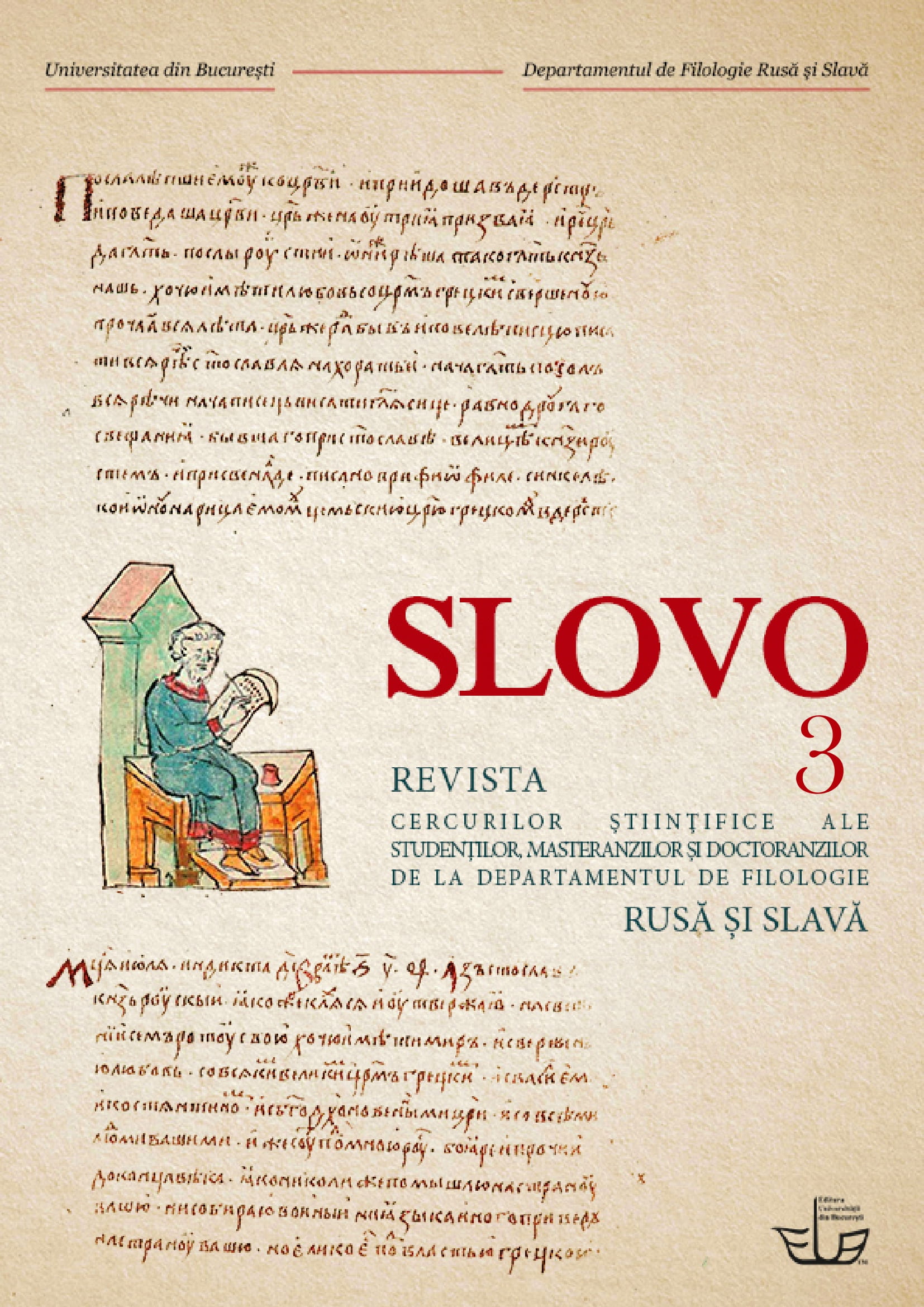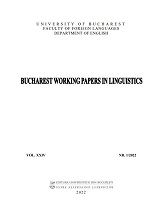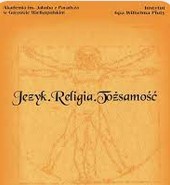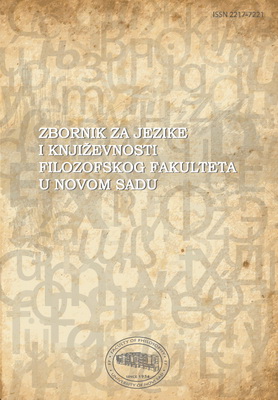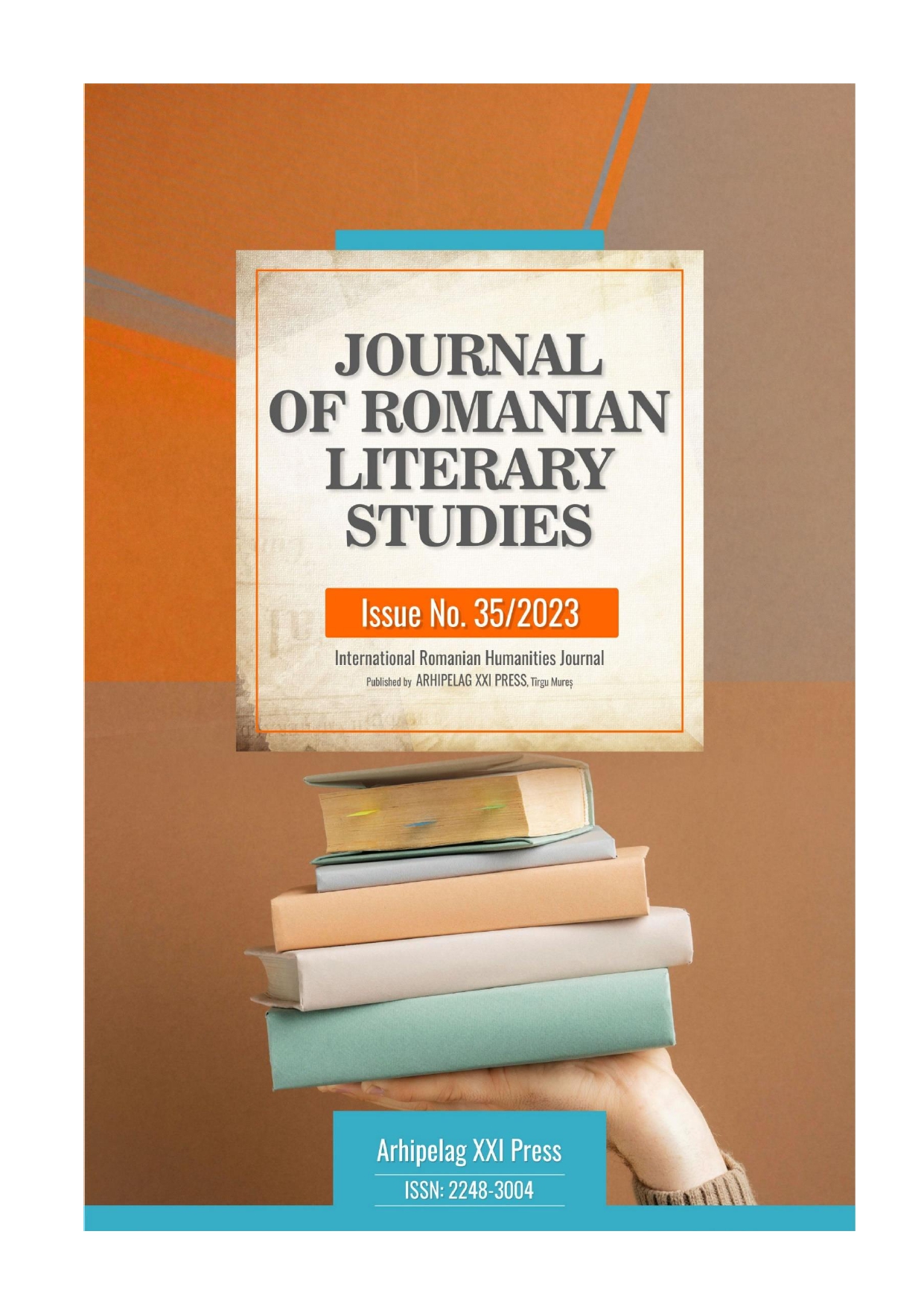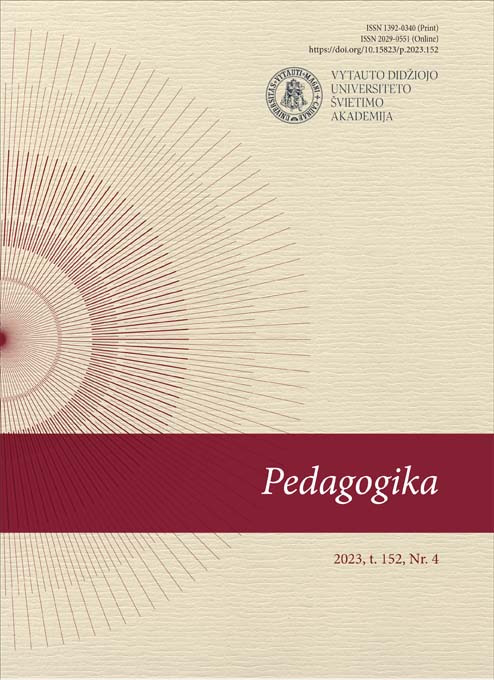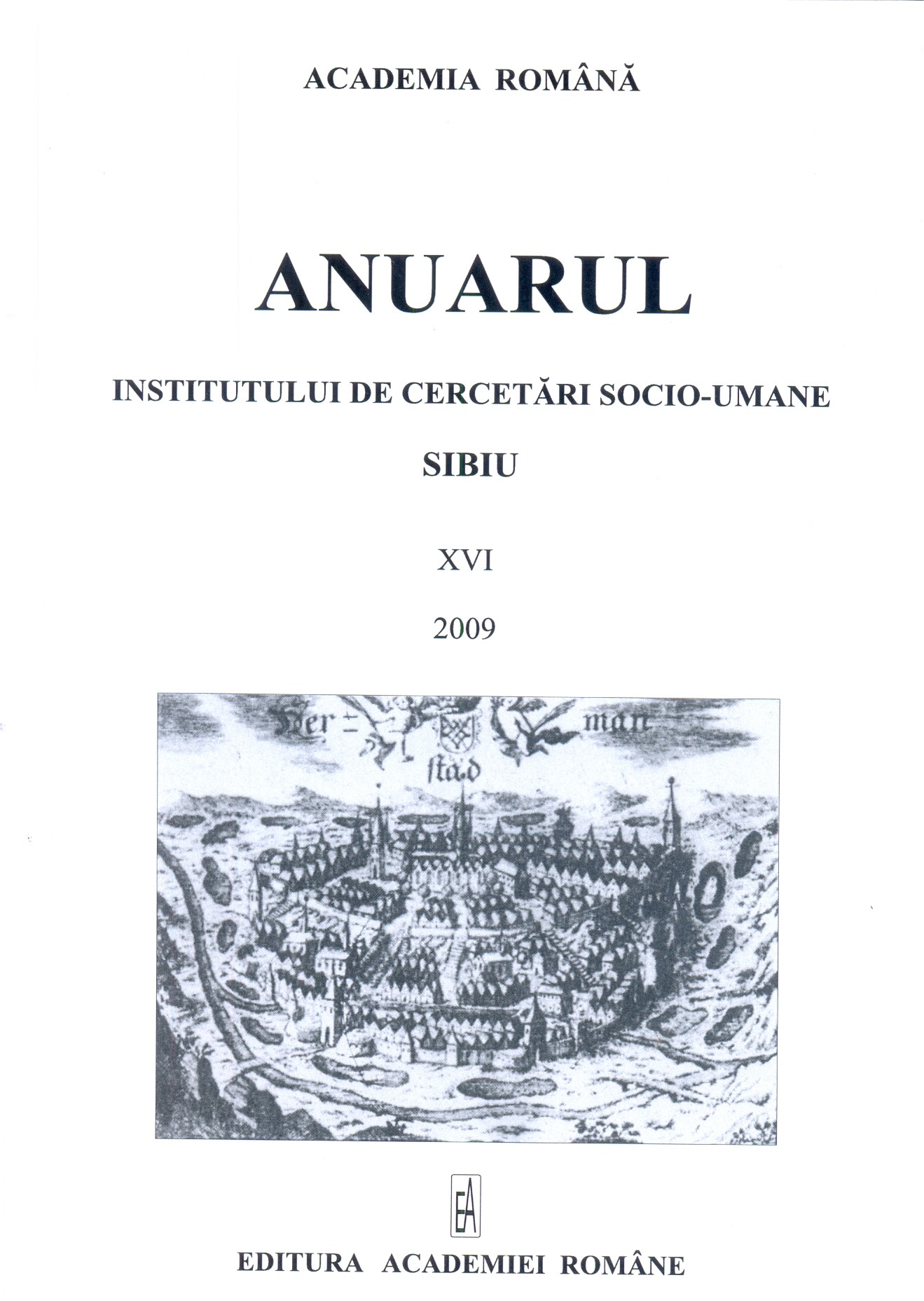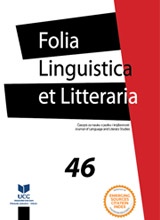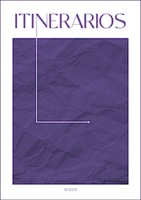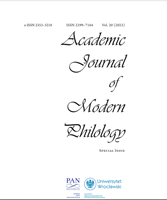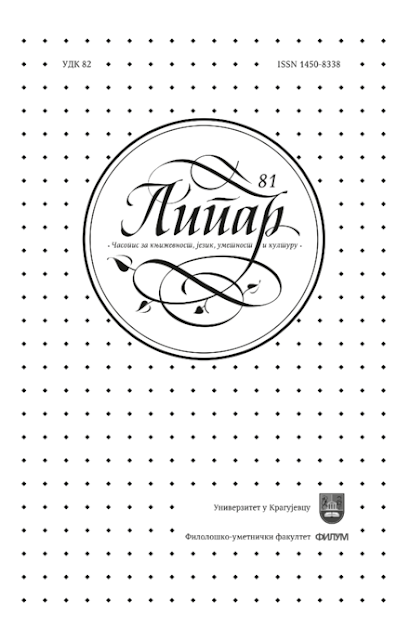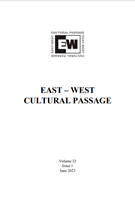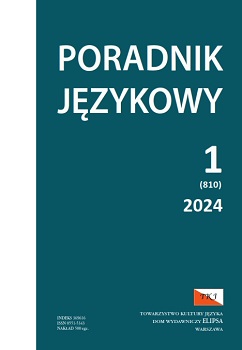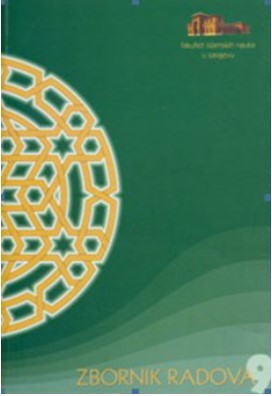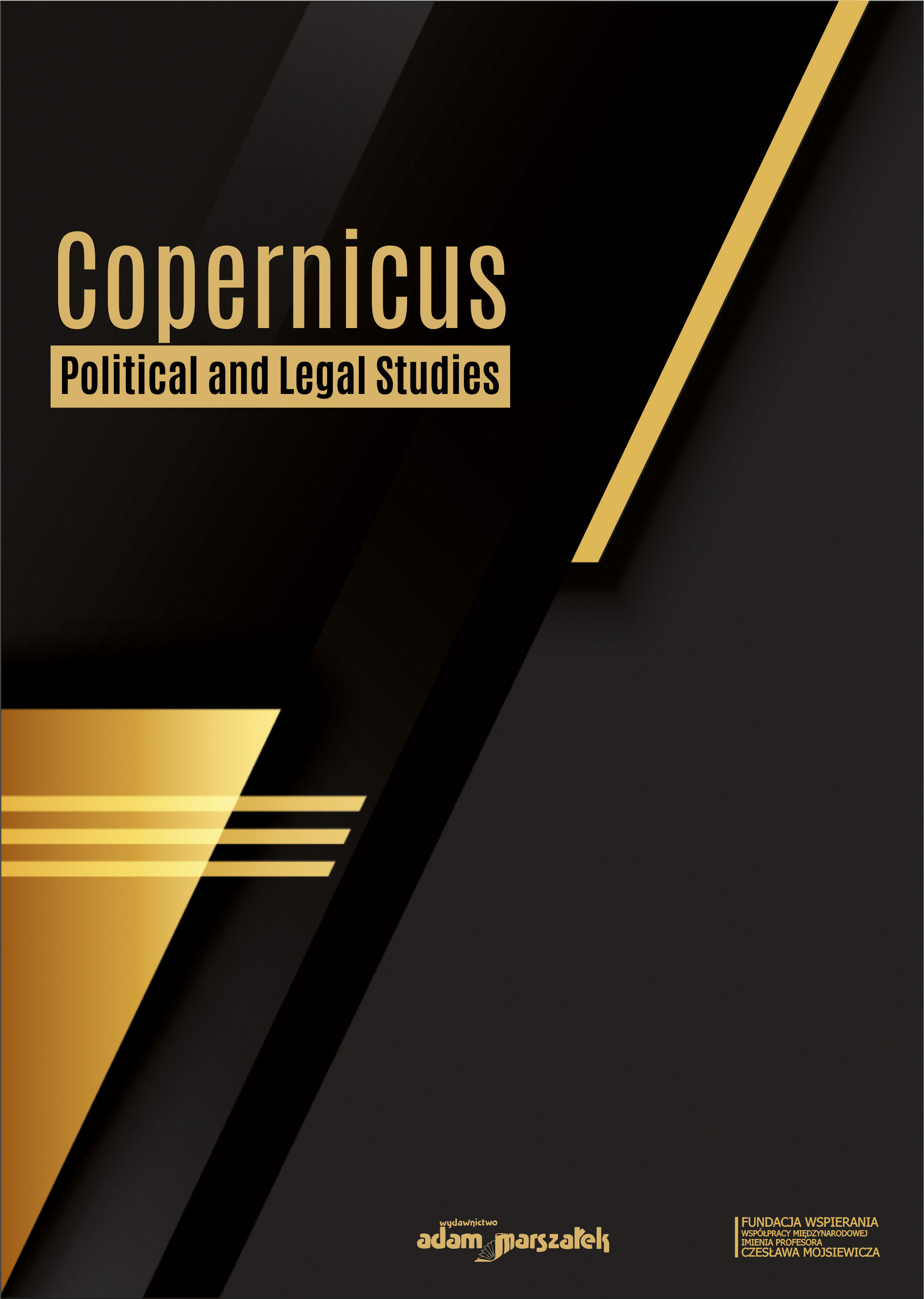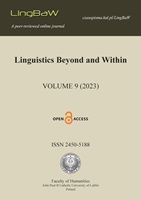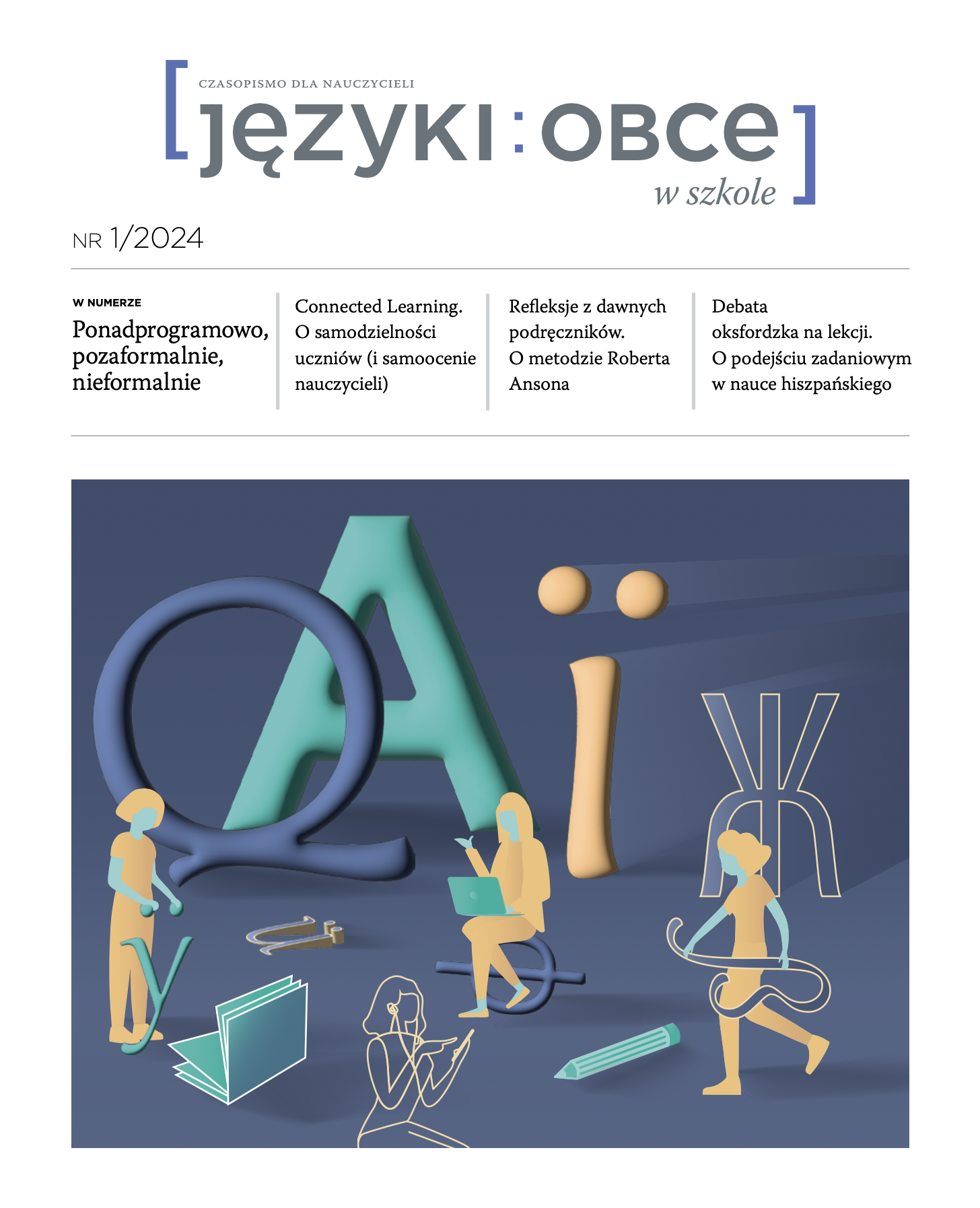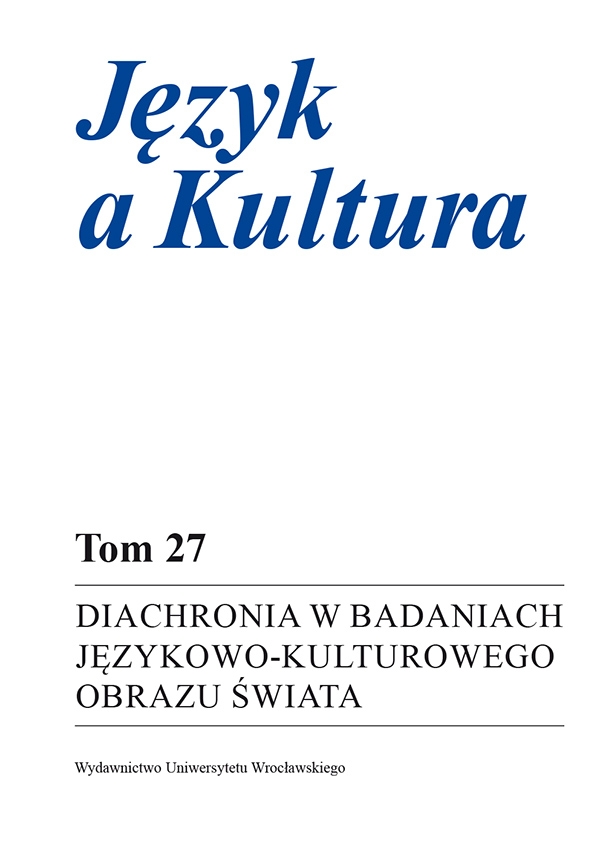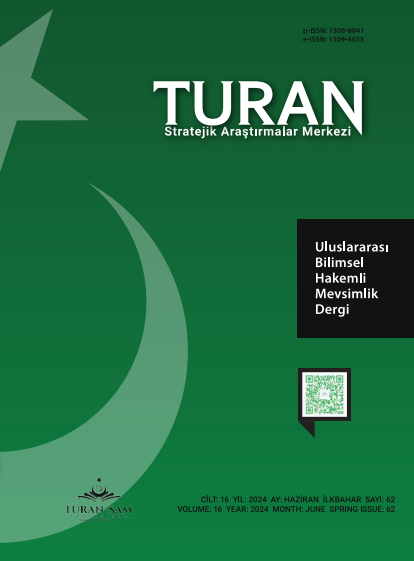Author(s): Sanja Šubarić / Language(s): Montenegrine
Issue: 46/2023
This paper is part of an analysis that examines the description of sounds in the grammatical literature of Montenegrin, Serbian, Bosnian, and Croatian languages, in accordance with the title of the course in Montenegro: Montenegrin, Serbian, Bosnian and Croatian Languages, and Literature. This course covers the study of the 'official language' of Montenegro (Montenegrin) and the 'languages in official use' in Montenegro (Serbian, Bosnian, and Croatian) as standardized systems. The paper deals with the description of sounds in the grammars of Serbian (Пипер, Клајн 2013) and Bosnian (Jahić, Halilović, Palić 2000) languages, while the description of sounds in the grammatical literature of the Montenegrin and Croatian languages was the subject of a paper published in the monograph within the field of Slavic philology – "From Ear to Ear" (Šubarić 2022). Sounds, as the fundamental elements of speech, have their own dedicated chapters within the grammatical literature of a specific language. In the analysis presented in the monograph "From Ear to Ear" (Šubarić 2022: 220), we pointed out the fact that in the grammatical literature of the languages spoken in the former Serbo-Croatian language area, sections dedicated to sounds (as articulatory-acoustic speech elements and functional units) have different titles (Phonetics and Phonology, Phonology, Phonetics with the Basics of Phonology, Phonetics with the basics of Phonology and Morphophonology, Phonetics and so on). This diversity of titles is supported by the fact that the issue of distinguishing between phonetics and phonology has not yet been resolved. In this regard, it is certain that the contemporary grammars of Serbian and Bosnian languages (as well as Montenegrin and Croatian) bear witness to various practical manifestations of the theoretical distinction between phonetics and phonology. Our primary focus has been on the phonetic nature of sounds in the specific languages. We have presented the way they are described and analyzed the principles of their classification. In order to improve the grammatical treatment of sounds, we have also examined the theoretical status of certain phonetic and phonological concepts and terms. Through specific observations, we have suggested overcoming certain terminological, classificatory, and methodological deficiencies in the given descriptions. In The Normative Grammar of the Serbian Language by Matica srpska (Пипер, Клајн 2013), the sounds of the Serbian language are presented in a chapter titled "Phonology." Within this chapter, there are six subsections or sections: Vowels, Consonants, Sonants, Accents, Unaccented Syllables, and Clitics. In general, it can be said that the description of vowels, consonants, and sonants in this grammar is characterized by inconsistency. To overcome this, we have commented on the observed inconsistencies and inaccuracies. As an example of the aforementioned observations, we highlight a few comments related to the description of sonants in the Serbian language in this context. For example, in this specific grammar, after a general definition of sonants as a type of sound, their description is atypically structured for grammatical literature. The description includes the sounds n, nj, l, lj, j, and v, while the sounds m and r are entirely neglected. Within this description, the sounds v and j unexpectedly lack formation specifications. Hence, our opinion is that different articulatory-acoustic identifications of the sounds j and v in the Serbian language literature particularly oblige authors of normative manuals to directly and unambiguously qualify their phonetic nature and function in the phonological system. Interestingly, in this specific description, the theoretical status of the terms "liquid" and "lateral sonant" is confirmed at a formal level (without presenting their hierarchical relationship), but the term "vibrant" is not addressed. Confirmation of the classificatory and methodological inconsistencies in the treatment of Serbian language sounds is provided by the fact that within the section on sonants, both sonants and consonants are classified according to their place of articulation. This unification disrupts the structure presented in the titles of the content sections and reduces the clarity of the primary classification of sounds. Although the chapter in The Normative Grammar of the Serbian Language dedicated to sounds is called "Phonology", it does not contain a description of the distinctive features that phonemes use to contrast with each other within the phonological inventory of the Serbian language. It also does not encompass the rules by which the phonemic units are organized within the phonological chain. In comparison to the description of sounds in the Serbian language, and also in comparison to the descriptions of the Montenegrin and Croatian languages presented in "From Ear to Ear" (Šubarić 2022), the description of sounds within The Grammar of the Bosnian Language is both more systematic and more detailed. The description is covered in the chapter "Phonetics and Phonology," which comprises a substantial 37 pages of text (pages 83–119). Given the primary focus and spatial limitations of this paper, our comments on this specific description are mostly presented at the level of general remarks. It is clear that the authors of The Grammar of the Bosnian Language have provided a thorough introduction to the description of Bosnian language sounds, clearly defining the subject of phonetics and phonology as separate linguistic disciplines. They have also distinguished between a sound as a physiological-acoustic phenomenon/unit and a sound as a distinctive unit. However, from the observations presented in the analysis of the description of Bosnian language sounds, we highlight an observation regarding the relationship between phonemes and sounds: this relationship in the relevant grammar is unjustifiably burdened by terminological equivalence between "tone" and "sound," specifically by the statement that the phoneme is "phonetically realized as a tone or sound." Certainly, besides the need for a conceptual correction of the definition of the phoneme (because linguistically, the terms "tone" and "sound" do not imply their synonymy), it should also be stylistically simplified by omitting pleonasm (compare to Šubarić 2022: 221). By defining allophones in The Grammar of the Bosnian Language, the authors impose synonymy between "sound" and "tone." The unjustifiability of designating the realization of the phoneme as a tone from our perspective is further confirmed by the fact that in the same grammar, vowels, according to common acoustic interpretation, are identified as tones, i.e., "pure tonal sounds," and then, in the continuation of the description, consonants are referred to as "tones with noise components." In the case of The Grammar of the Bosnian Language, we have also pointed out certain inaccuracies in the formulations describing the anatomy of speech organs. We also noted that in the classification of consonants in the Bosnian language based on their manner of articulation (explosive, merged consonants, and fricatives), there is terminological consistency that aligns with the approach we generally support when treating the same type of classification in the grammars of the Serbian, Montenegrin, and Croatian languages. In The Grammar of the Bosnian Language, the terms used to name consonants based on their manner of articulation are consistently motivated by the auditory impression that characterizes their articulation. In contrast, the grammars of the Serbian, Montenegrin, and Croatian languages used in this segment do not confirm terminological uniformity. Instead, they employ triads of identification labels motivated by either the type of articulatory obstruction or acoustic/auditory impression (e.g., plosive, fricative, and merged consonants) to name specific consonants. We emphasize that this analysis, as well as the analysis of sound descriptions in the grammars of the Montenegrin and Croatian languages, has shown that sounds (as physiological-acoustic segments of speech and as distinctive linguistic units) require greater attention from authors in the grammatical literature. The comments provided indicate that specific grammatical content can be improved through a more systematic and reliable description of the phonetic nature of sounds, unambiguous articulatory-acoustic qualifications, precise and consistent terminology, principled classification, and methodological consistency. Once again, the earlier assertion that the descriptions we have examined do not contribute to a clear distinction between phonetics and phonology (and that in the broader context of the same content, the question of the relationship between phonology and morphophonology remains open) has been confirmed (compare to Šubarić 2022). In fact, regardless of the titles of the explained grammatical content (Phonology, Phonetics and Phonology) and the distinctions presented within them between specific disciplines, their theoretical separation is either negated by the descriptions themselves (cf. Пипер, Клајн 2013; Silić, Pranjković 2007) or is not entirely recognizable in their practical reflection (cf. Čirgić, Pranjković, Silić 2010; Jahić, Halilović, Palić 2000). It is evident that linguists' views regarding the distinction between phonetics and phonology are not yet fully harmonized in this century. Therefore, we question the formal favoritism of phonology within grammatical descriptions of sounds – both as phonetic speech segments and as phonological units. This is particularly problematic because, as demonstrated, certain descriptions convey theoretical distinctions between specific disciplines through their definitions while simultaneously opposing these distinctions by incorporating aspects within the domain of phonology that are defined as the subject of phonetics (e.g., classifications of sounds by manner and place of articulation). In fact, we believe that formal favoritism of phonology is not justified, and that in the titular identifications of the grammatical content dealing with the sounds of specific languages, the linguistic scope of phonetics should be considered. It is implicit that the phonetic nature of sounds is fundamental to the description of phonological systems, meaning that the treatment of sounds in the grammatical literature should be grounded in their articulatory and acoustic characteristics, which are determined through phonetic research.
More...
